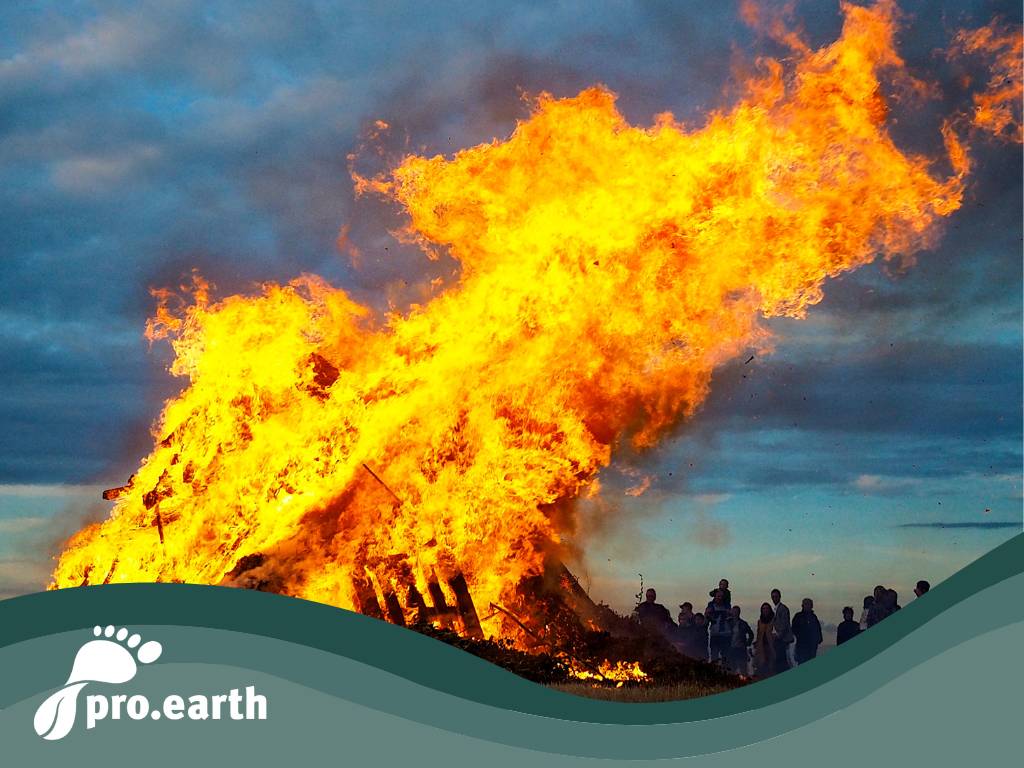How an environmentally friendly midsummer fire works

We are rapidly approaching the longest day and the shortest night of the year. The summer solstice, also known as midsummer night, is celebrated in many regions with solstice festivals including midsummer bonfires. Cultivating customs is part of our identity. This also includes traditional bonfires throughout the year. To ensure that these are as gentle as possible on our environment, the animal world and our own health, we would like to present the most important rules for this.
Smoke development - many times more harmful than diesel soot
Burning wet or varnished wood or other waste produces a lot of harmful fine dust emissions, which can cause respiratory and cardiovascular diseases.
The health relevance of particles from wood fires has already been scientifically investigated several times. We have also written about this in our article on proper heating. Particles from uncontrolled combustion - such as burning "piles" outdoors - are around 10 times more harmful than particles from diesel engines. This is mainly due to the high content of carcinogenic substances (e.g. polycyclic aromatic hydrocarbons).
Over 3.5 kg of particulate matter = three times around the earth
Burning a pile of branches weighing just 200 kg releases approx. 3.6 kg of particulate matter (PM10). This is equivalent to driving 115,900 km in a diesel car - enough to circle the earth almost three times.
Rules for environmentally friendly burning
-
- The wood must be dry, unpainted and uncoated so that it burns with as few pollutants as possible
- Tree and shrub cuttings must be piled up as loosely as possible so that plenty of air is added for the best possible combustion of the carbonization gases
- You light the pile from above, the flames consume the smoke
- The pile is freshly stacked for the celebration to prevent animals from burning in it
- The ash and residues are disposed of as waste so as not to pollute the groundwater
- Do not light a fire in moderately strong winds (from 20 km/h - moderate wind; branches move, loose paper is lifted from the ground)
- A minimum distance to buildings (25 meters applies here) must be maintained for safety reasons
- Only approved ignition aids may be used to light the fire. The use of highly volatile substances or substances that are hazardous to water or air, such as diesel or heating oil, waste oil, alcohol, petrol or spirits as fire accelerants to ignite or maintain the fire is prohibited under Austrian law. law.
https://news.pro.earth/2022/11/07/einheizen-aber-richtig/






